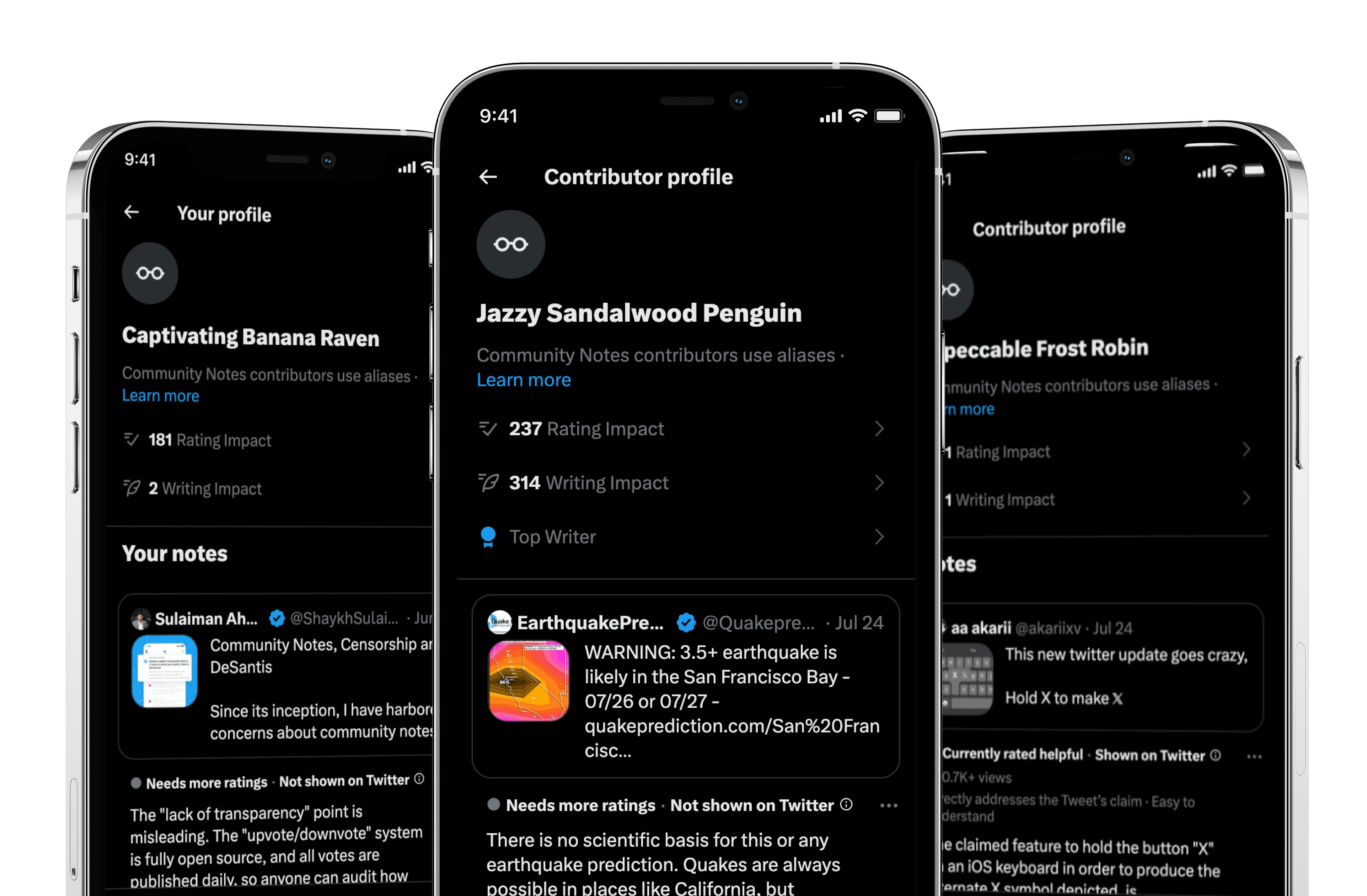
One of the great things about building something that has never been attempted before, like Community Notes, is that we genuinely do not know what shape the final product will take, or what features are necessary for it to be successful. Our approach has been one of constant curiosity and learning, and introducing Aliases was one example where we significantly changed the product based on the community's and expert's feedback.
Initially, we hypothesized that crowdsourced notes would be more credible if they were linked to the author's Twitter account. After a year of observing, talking to our pilot contributors, and consulting experts, we learned that a significant portion of people felt uneasy about contributing under their names. This concern was stronger among women and black contributors.
In addition to that, in the same year that Birdwatch launched, Chris Bail launched a book in which he finds that online pseudonymity can help prevent polarization, by allowing people to cross partisan lines and share "middle ground" or even opposing views that they wouldn't feel comfortable sharing under their identities due to peer pressure.
These learnings led us to question our initial identity model, and ask ourselves:
How might we keep our contributors safe from harassment while keeping everyone accountable to the quality of their contributions?
There are so many ways you can design an anonymous/pseudonymous system. It's a pandora's box of product design decisions:
It took us almost 1 year to reach a design that we felt met our requirements and solved our initial HMW questions. A few of the requirements we prioritized:
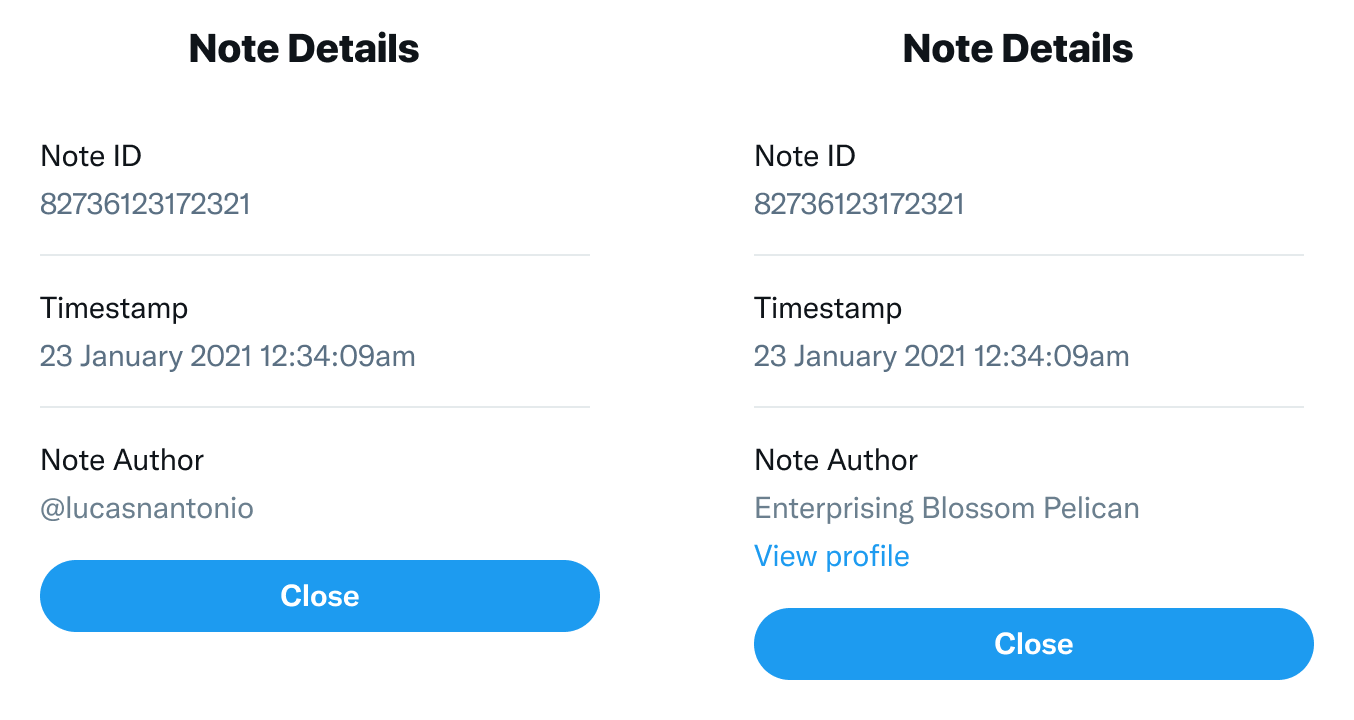
One possible downside of anonymity is that some people may use it as a mask behave maliciously without being accountable for it. In designing our Alias program, we wanted to make sure that this risk was minimized.
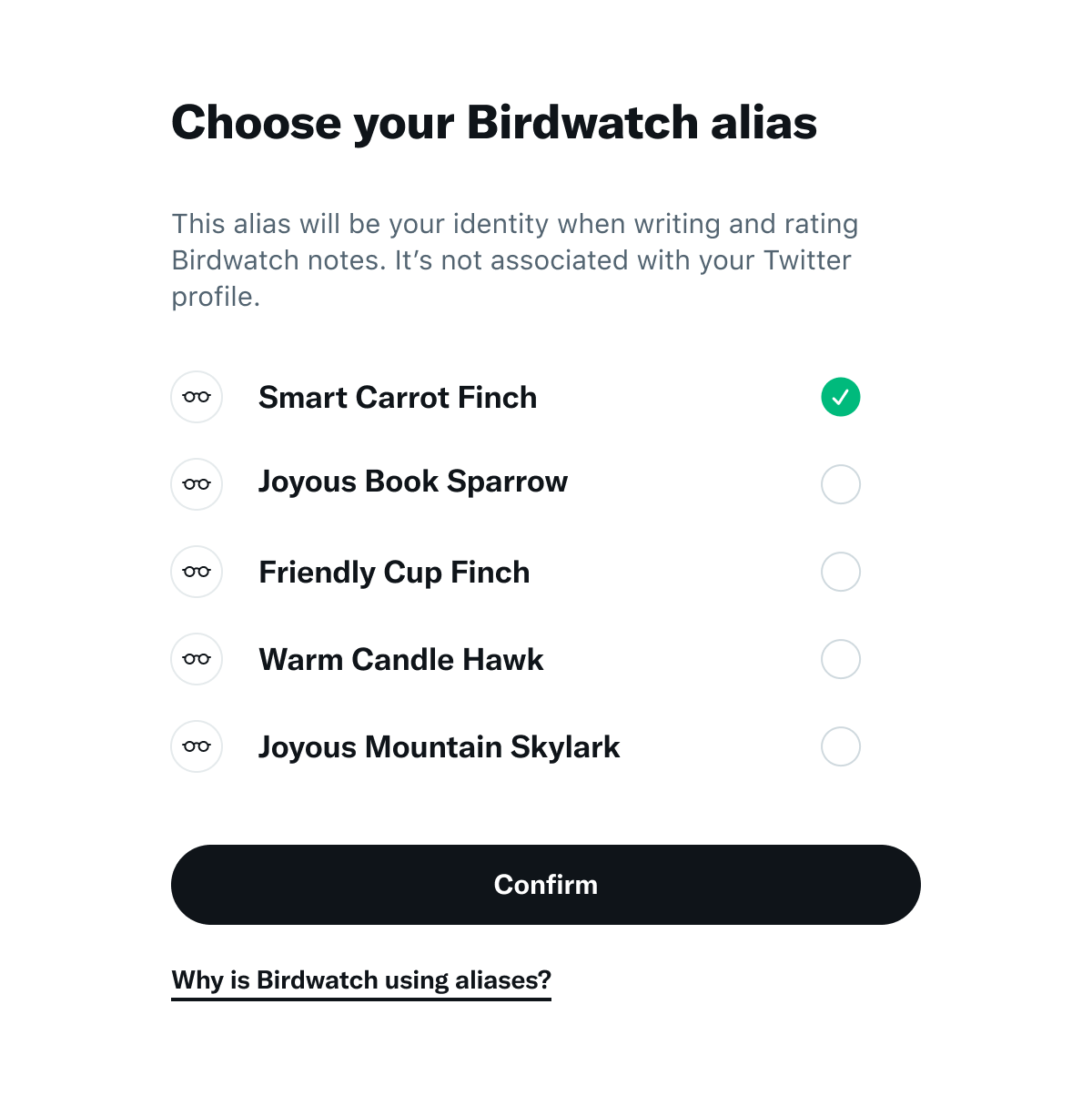
Before aliases, we didn't have a surface to display people's history of notes, since this could increase the potential for harassment. With aliases in place, we now have a safe way to do so. Introducing public profiles allows contributors to check on each other's histories, keeping them accountable through the ratings they receive.
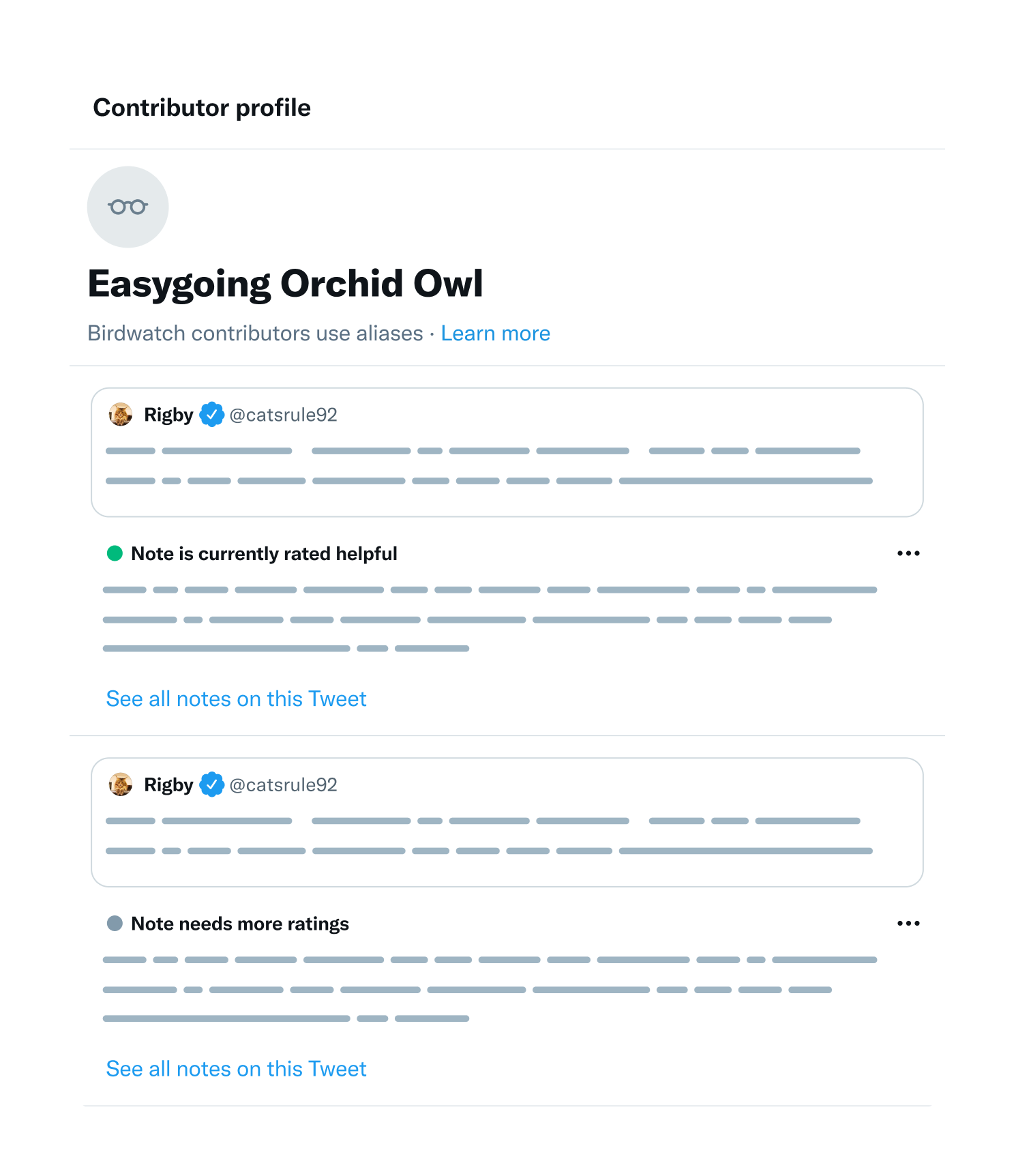
The design we shipped in this first version is very minimal, but we have big plans for this surface. Watch this space!
The reception was enthusiastic. This is definitely going to be a long road, and I can't wait to see what we learn from this experiment.
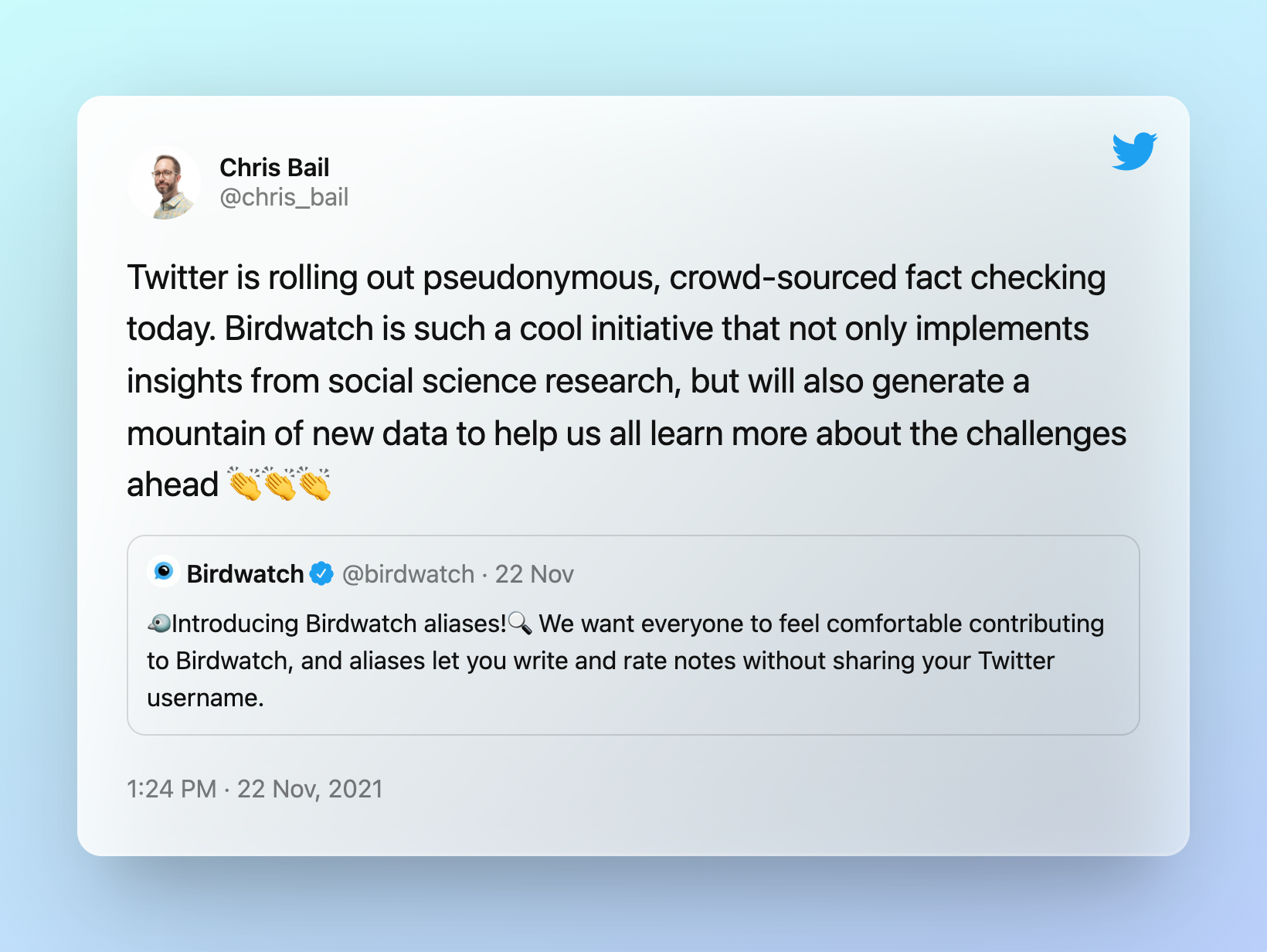
This website was built using Obsidian, Eleventy and Vercel.
The text is set in Untitled by Klim Type Co.